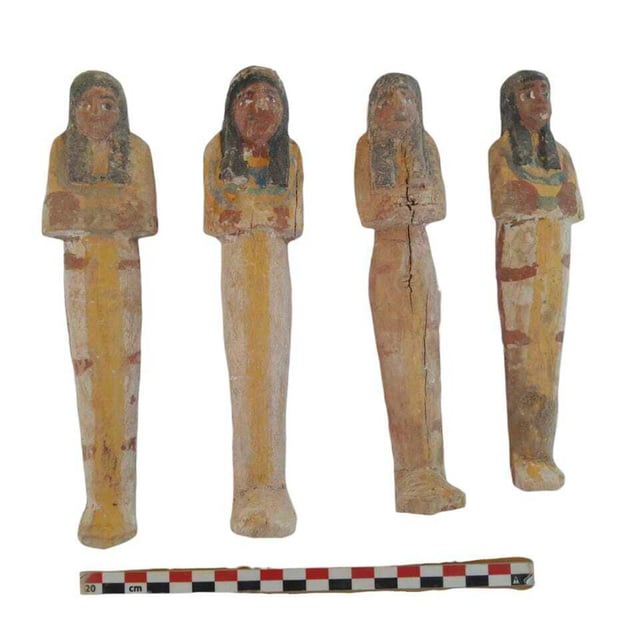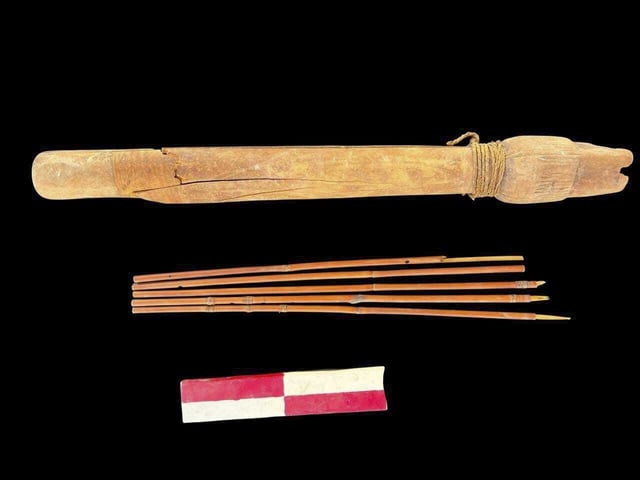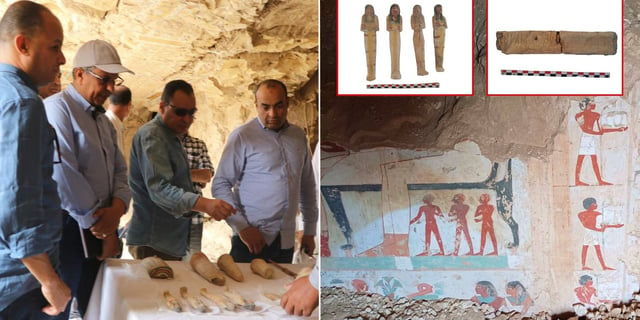Overview
- Archaeologists working at the Dra Abu al-Naga necropolis in Luxor have confirmed three tombs from Egypt’s New Kingdom era, between 1550 and 1070 B.C.
- Hieroglyphic inscriptions identify the tombs’ owners as Amum-em-Ipet, a Ramesside estate official, and two 18th dynasty figures: Baki, a grain silo supervisor, and ‘S’, a temple scribe and northern oases mayor.
- Ministry photos reveal artifacts and statue fragments alongside wall scenes depicting funeral furniture carriers and banquet rituals.
- Sherif Fathi, tourism minister, describes the find as a major boost to cultural tourism ahead of the Grand Egyptian Museum’s summer opening.
- Further cleaning and analysis of inscriptions will be overseen by the Supreme Council of Antiquities to better understand the tombs’ historical significance.



